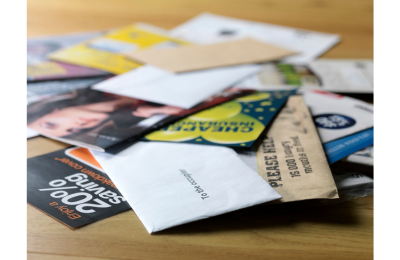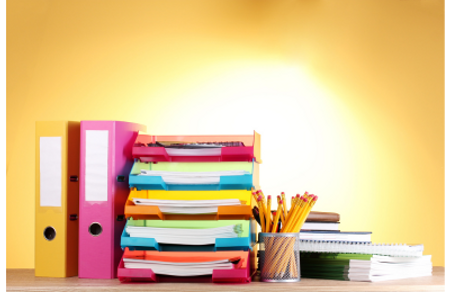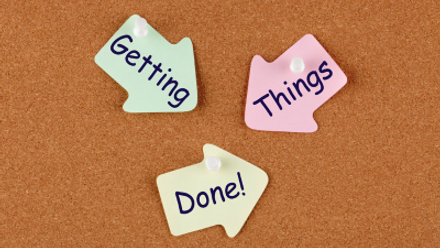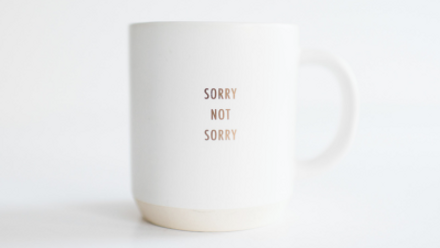Simplify your paperwork
4 minute read
Are you drowning in documents but don’t know how to start getting your paperwork in order? You’re not alone. According to a survey by Office Depot, 67% of people are not sure how to start or maintain their paperwork organising systems.
Perhaps the following sounds familiar…

- You’re out and about all day, your car is an extension of your office and you can’t face sitting at your desk when you get home
- Junk mail, old envelopes and out of date files are taking over your workspace
- You’ve previously spent time, energy and money sourcing and buying files, notebooks and storage solutions in a bid to get organised, only for it to sit gathering dust because you don’t know where to start
- Your time is being wasted because you have to search for things but are simply too busy to sort it out
Busy people often describe to me how this disorganisation can impact their efficiency and motivation. Many feel overwhelmed, stressed or distracted.
For some, the effect is financial as interest or fees are being incurred. Others share their worries that important actions are slipping through the cracks.
“Wouldn’t it be great to not to have to think too hard about what you need to think about?” David Allen — Getting Things Done
Decluttering and organising your paperwork might seem like a tedious and time-consuming task that can be put off for another day, but your home office is a reflection of you, and putting some simple systems in place can be an instant pick-me-up with long-term benefits.

Below, I’ll outline an approach for letting go of the excess paperwork, managing what is left and implementing a comfortable level of organisation, so that you are able to lay your hands on documents quickly, be clear and current on your priorities and feel more energised, focussed and capable of reaching your goals.
You will need:
- A shredder and a bin
- Separate piles/zones for items that will be recycled, shredded or filed
- Some transparent files and sticky labels
- A progress tray — for items that need an action or are awaiting a response
- A large space — the floor, a dining table or kitchen worktop
- A filing cabinet, boxes or drawers (and suspension files, if applicable)
- A rough idea of what categories you want to set up going forward i.e. travel, cars, banking, utilities. Some categories will naturally emerge as you go through the process
Set aside some time, grab a drink and a snack and put on some motivational music. If weather permits, opening a window immediately creates a positive shift in energy.
Aim for short, specific and simple actions. You might need to break the task down into bite-sized chunks over a few sessions. The result doesn’t necessarily need to be pretty or stylish, it just needs to be functional!
Step by Step Guide to Managing Paperwork
- Gather every piece of paper, including any from attics or garages. If doing this all at once isn’t feasible, primarily focus on the recent backlog
- Sift through your papers, separating items into piles for shredding, recycling, actioning and filing. Try to be ruthless and lighten the load
- When setting aside those to be filed, roughly group by category i.e. financial, travel etc., and label suspension files accordingly. Ideally, set aside a section/drawer of the filing cabinet for archived paperwork
- Deal with the shredding and recycling as quickly as possible, so that you can then focus on what is left
- Go through the remaining items: depending on the volume and type of paperwork, you might consider grouping related papers together in transparent files with a basic label on the front of each i.e. home insurance policy in one, mortgage documents in another etc.
- Any items that need an action or response should be placed in your progress tray
- Put the remaining items in the appropriate sections within the filing system.
“For every minute spent organising, an hour is earned.” Benjamin Franklin
Progress Not Perfection
Going forward, aim to deal with paperwork on a daily basis:

- Dispose of junk mail. Check and action bills and invoices. Place pending items in the progress tray
- File or shred everything else
- Conducting a regular (at least weekly) review of your progress tray, and scheduling/actioning any next steps, is one of the most effective ways of staying functional, clear and current on your priorities
Once the above system is in place and routinely-managed, you will find that, rather than searching for documents or trying to recall what is next on your to-do list, your time and attention is freed up to concentrate on the people, activities and things that are most important to you.
If you would like someone to work alongside you with your paperwork challenges, check out our Find an Organiser page and discover how a local professional could help lighten the load.
Kate Galbally of Better Organised, is a Glasgow-based professional organiser & productivity coach. She helps busy families to declutter, organise and simplify their homes and lives so that they can make space for what matters most.






